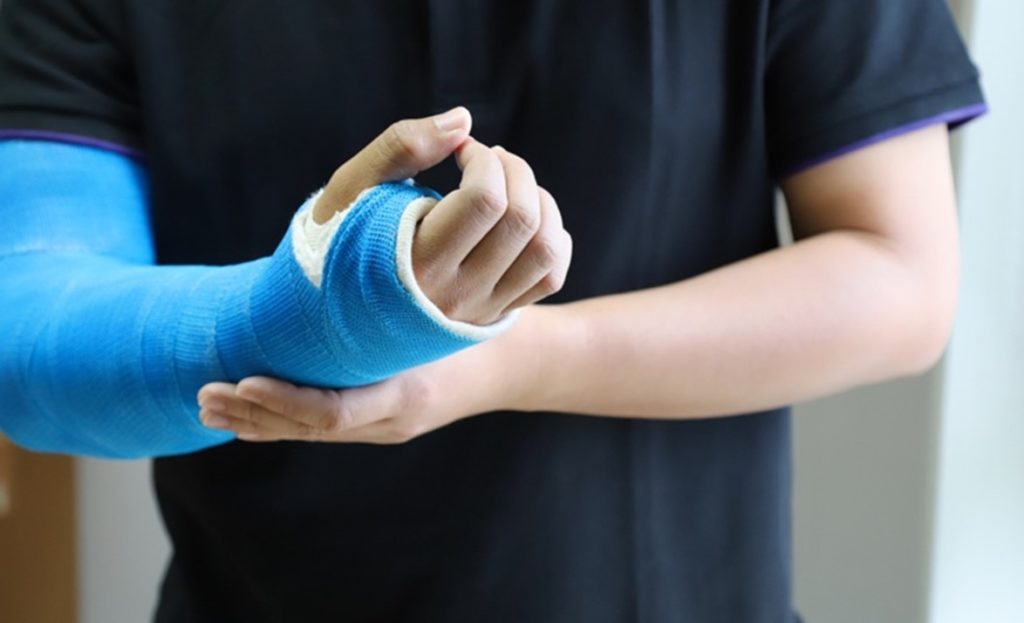Over 6 million fractures occur each year in the United States. Of that, nearly 40% of them occur at home.
While fractures can come in all shapes, sizes, and locations, the most common fractured limb is the arm. Proper treatment is the only way to ensure long-term and effective healing from stress fractures to compound fractures.
Because fractures often occur in children and teenagers, treatment using a splint or cast is the most used method to heal their fracture and promote new, healthy bone growth.
While fractures are common occurrences that all of us should try to avoid, the terminology associated with a broken bone can be hard to decipher, especially regarding how they’re treated. Words like “splint” and “cast” are thrown around and used interchangeably, but what exactly is the difference?
Today we will explore the difference between a splint vs. a cast and dive into more detail about fractures, including how they’re diagnosed and treated.
First, What Is a Fracture?
A fracture is a fancy term for a broken bone. While it sounds simple, a fracture is the most severe type of injury to a bone and can occur anywhere in the body, but it most often takes place on a limb.
There are various types of fractures, including ones that break a bone completely and ones that partially break a small area of the bone. The most common fractures include stress, compound, and compression fractures.
Common signs of a fracture include
- Intense pain located directly on top of the bone
- Pain that becomes worse when you apply pressure to the affected area
- Severe swelling and bruising
- Numbness or tingling
- A “cracking” sound at the time of the injury
- A change in the appearance of the area, causing it to look crooked or deformed
- Loss in range of motion
Diagnosis and Treatment
A fracture is diagnosed via x-ray.
Treatment options differ based on the type, severity, and location of the fracture.
The most common way to treat a fracture is with a splint or cast applied directly to the broken limb and surrounding area for stabilization and forced immobility.
This type of treatment protects the broken bone and promotes healing and new bone growth to take place.
In severe fracture cases, specialized surgery by an orthopedic surgeon may be required.
Splint vs. Cast
Now that we understand the treatment for a fracture let’s discuss the differences between a splint vs. a cast.
It is important to note that a fracture is a medical emergency, and a trained orthopedic doctor or medical professional is the best judge of what type of treatment you need for a fracture. You should never try to self-diagnosis and treat a fracture solely at home.
What Is a Splint?
A splint is often referred to as a “half cast” and provides less support than a full cast.
It is used for less severe fractures. Splints come in ready-made and custom forms and are often removable.
Splints can be adjusted to accommodate changes in the affected area, including increased or decreased swelling.
Off-the-shelf splints often come with Velcro straps for fast and easy adjustment and removal. They come in various shapes and sizes and are the best in-the-moment option to protect a potential broken limb.
Splints are a great option in the treatment process for more significant breaks once a cast has been placed and removed and a patient is in the end stages of their bone healing process. It works to help protect the newly formed bone and weakened limb until it is healed completely.
What Is a Cast?
An orthopedic cast, or “cast” for short, is a medical shell custom-made to fit the patient’s broken limb.
It is often constructed of plaster or fiberglass and completely encompasses a patient’s affected limb to limit mobility and promote healing.
Similar in functionality to a splint, a cast is the most supportive option for a fractured limb.
Depending on the fracture’s location, size, and severity, a cast can be left in place for months at a time until the bone is fully healed.
Care Instructions
Whether you receive a splint or a cast, there are care instructions you should follow to ensure it is maintained in good condition to promote long-term health and optimal healing goals.
The best way to care for your splint or cast is to:
- Keep it dry. Moisture weakens plaster and dampens padding, leading to skin irritation and infection. If you cannot remove your splint or cast, purchase a waterproof covering to protect it from water in the shower, bath, or handwashing.
- Avoid walking or standing on a “walking cast” until it is completely dry and hard.
- Keep dirt, sand, powder, and any other objects away from the inside of your splint or cast. If anything accidentally falls in, it could lead to infection. Alert your doctor right away.
- Abstain from pulling out the padding or breaking off rough or worn edges.
- Avoid sticking objects inside of your splint or cast to scratch and itch. Try light tapping, cool air, or an over-the-counter spray. If itching persists, contact your doctor.
- Inspect the cast and your skin around the area regularly to ensure everything looks and feels normal. Any abnormalities should be brought to your doctor’s attention right away.
Fracture Care on the Emerald Coast
If you or a loved one sustained a recent injury that you believe to be a fracture, we can help.
Our compassionate and experienced team at Emerald Coast Urgent Care is here for you seven days a week.
Our on-site x-rays provide quick and easy results sooner so you can receive the appropriate diagnosis and treatment you need today.
There is no need for an appointment; walk in to get treatment for your fracture now.




